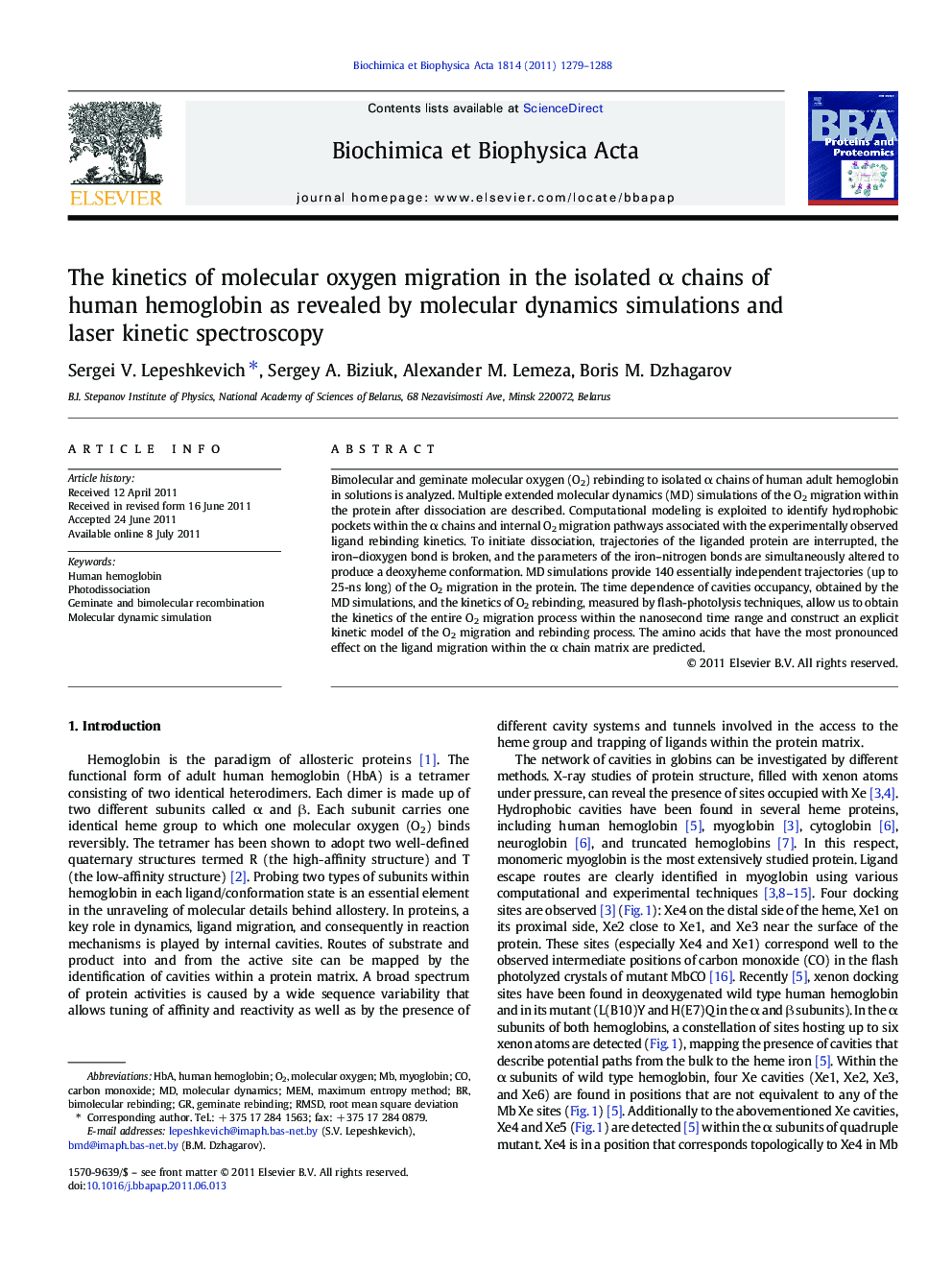| Article ID | Journal | Published Year | Pages | File Type |
|---|---|---|---|---|
| 1178742 | Biochimica et Biophysica Acta (BBA) - Proteins and Proteomics | 2011 | 10 Pages |
Bimolecular and geminate molecular oxygen (O2) rebinding to isolated α chains of human adult hemoglobin in solutions is analyzed. Multiple extended molecular dynamics (MD) simulations of the O2 migration within the protein after dissociation are described. Computational modeling is exploited to identify hydrophobic pockets within the α chains and internal O2 migration pathways associated with the experimentally observed ligand rebinding kinetics. To initiate dissociation, trajectories of the liganded protein are interrupted, the iron–dioxygen bond is broken, and the parameters of the iron–nitrogen bonds are simultaneously altered to produce a deoxyheme conformation. MD simulations provide 140 essentially independent trajectories (up to 25-ns long) of the O2 migration in the protein. The time dependence of cavities occupancy, obtained by the MD simulations, and the kinetics of O2 rebinding, measured by flash-photolysis techniques, allow us to obtain the kinetics of the entire O2 migration process within the nanosecond time range and construct an explicit kinetic model of the O2 migration and rebinding process. The amino acids that have the most pronounced effect on the ligand migration within the α chain matrix are predicted.
Graphical abstractFigure optionsDownload full-size imageDownload high-quality image (92 K)Download as PowerPoint slideHighlights► Bimolecular and geminate O2 rebinding to α chains of human hemoglobin in solutions is analyzed. ► Multiple extended molecular dynamics simulations of the O2 migration within the protein after dissociation are described. ► The kinetics of the entire O2 migration process within the nanosecond time range were obtained. ► An explicit kinetic model of the O2 migration and rebinding process was constructed.
